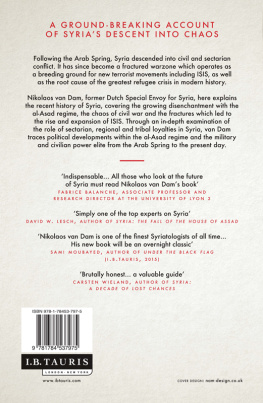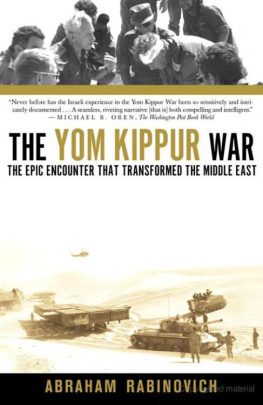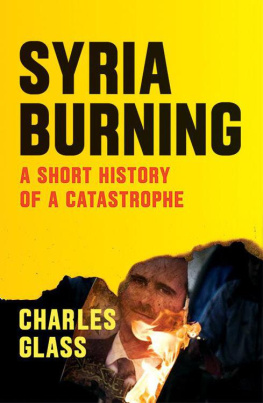xf

Map of Syria
SYRIAN REQUIEM
The Civil War and Its Aftermath
ITAMAR RABINOVICH
CARMIT VALENSI
PRINCETON UNIVERSITY PRESS
PRINCETON & OXFORD
Copyright 2021 by Itamar Rabinovich and Carmit Valensi
Princeton University Press is committed to the protection of copyright and the intellectual property our authors entrust to us. Copyright promotes the progress and integrity of knowledge. Thank you for supporting free speech and the global exchange of ideas by purchasing an authorized edition of this book. If you wish to reproduce or distribute any part of it in any form, please obtain permission.
Requests for permission to reproduce material from this work should be sent to
Published by Princeton University Press
41 William Street, Princeton, New Jersey 08540
6 Oxford Street, Woodstock, Oxfordshire OX20 1TR
press.princeton.edu
All Rights Reserved
Library of Congress Cataloging-in-Publication Data
Names: Rabinovich, Itamar, 1942 author. | Valensi, Carmit, 1980 author.
Title: Syrian requiem : the civil war and its aftermath / Itamar Rabinovich, Carmit Valensi.
Description: Princeton : Princeton University Press, 2021. | Includes bibliographical references and index.
Identifiers: LCCN 2020017878 (print) | LCCN 2020017879 (ebook) | ISBN 9780691193311 (hardback) | ISBN 9780691212616 (ebook)
Subjects: LCSH: SyriaHistoryCivil War, 2011 | SyriaPolitics and government2000 | SyriaForeign relations21st century. | SyriaForeign relationsUnited States. | United StatesForeign relationsSyria.
Classification: LCC DS98.6 .R335 2021 (print) | LCC DS98.6 (ebook) | DDC 956.9104/23dc23
LC record available at https://lccn.loc.gov/2020017878
LC ebook record available at https://lccn.loc.gov/2020017879
Version 1.0
British Library Cataloging-in-Publication Data is available
Editorial: Fred Appel and Jenny Tan
Production Editorial: Sara Lerner
Text Design: Leslie Flis
Jacket Design: Karl Spurzem
Production: Erin Suydam
Publicity: Kate Hensley and Kathryn Stevens
Copyeditor: Kathleen Kageff
Jacket Credit: Two Syrian men walk among the rubble following recent airstrikes in the Al-Kalasa neighborhood of Aleppo, Sept. 24, 2016. Credit: Basem Ayoubi / ImagesLive / ZUMA Wire / Alamy
Itamar dedicates this book to Frank Lowy; and Carmit dedicates it to Daniel, Mia, and Emma Rozenblum
PREFACE
The Syrian civil war and crisis has been a major event in the Middle Eastern and global arenas during most of the second decade of the current century. Unfolding in an important Arab and Middle Eastern country sharing borders with five neighboring states, the Syrian rebellion against Bashar al-Asads regime has set off a major regional and global crisis. It did not remain a domestic affair for long. The ripple effects of the crisis would reach Europe and, to a lesser extent, even the United States by 201516, with important political consequences on both continents. The decisions made by at least two American presidents about Americas involvement in Syria have triggered sharp debate and are likely to figure prominently in the discussion of their legacies. And the international communitys failure to respond properly to a humanitarian disaster of this magnitude raises important questions regarding the current global international order. Authoritative figures of the casualties, the degree of physical destruction, and the enormity of the refugee problem inside and outside Syria are unavailable, but most sources agree that by the middle of 2020 close to half a million people had died in Syria and close to twelve million Syrians had become refugees or IDPs (internally displaced persons). The United Nations estimates that of the eighteen million people who currently live in Syria, almost twelve million are in need of humanitarian help. Six million Syrian Sunnis now live outside Syria, and their return is uncertain if not unlikely. The extent of this human tragedy goes beyond numbers and is forcefully described in the writing of several Syrian and other authors.
The Syrian crisis has also been one of the most thoroughly reported on events of this decade. Conventional media coverage was not just supplemented but in some cases overtaken by instantaneous, on-the-ground coverage widely disseminated on the internet and on social media. Events from peaceful demonstrations to barrel bombings and chemical weapons attacks have been recorded on cell phones and sent across the globe. Alongside such wide coverage, academic analysis of the events as well as advocacy have proliferated in many forms, including articles, monographs, essays, think-tank blog postings, andperhaps especiallytweets. The number of books dealing with the Syrian civil war and the larger Syrian crisis continues to grow, running the gamut from straight histories
The present book is a contribution to the contemporary history of the conflict and crisis. In what follows we seek to provide context and perspective by addressing several major and underlying issues and questions: the structural weakness of the Syrian state, the relationship between state and political community in Syria, the unique role of sectarianism in Syrian politics, the transformation of Middle Eastern and regional politics by the new roles played by Iran and Turkey, along with the United States diminished role and Russias return to a dominant role in the Middle East.
Historians engage in critical studies of past events and seek to narrate, explain, and interpret them by putting them in context and perspective. One of the main challenges confronting historians, contemporary historians among them, is the need to combine narrative with analysis of the main themes and issues. The British historian Ian Kershaw in his masterly study of the final phase of World War II explained the approach he chose:
The chapters that follow proceed chronologically. By combining structural history and the history of mentalities and dealing with German society from above and below the narrative approach has the virtue of being able to depict in precise fashion the dramatic stages of the regimes collapse but at the same time its astonishing resilience and desperate defiance in sustaining an increasingly obvious lost cause.
We attempt to meet this challenge by beginning with two narrative chapters and then moving to three thematic ones. The first chapter offers an overview and interpretation of Syrian history from 1963, when the Bath Party came to power, to March 2011, when the Syrian rebellion broke out. An understanding of this history is essential to grasping the major issues at stake in Syria during the past nine years. The second chapter offers a narrative of the civil war and the Syrian crisis from March 2011 to the end of 2018. The next three chapters, the core of the book, take up the roles played by the principal actors: domestic (). In the fifth chapter, dealing with the role and policies of the external powers, the reader will note that the section on the United States is significantly longer and more detailed than the one dealing with Russia. This reflects the fact that Russias policy in Syria has been formulated and carried out in an opaque manner by a group of notoriously secretive cadre of policy makers. For the analyst, there is a lamentable dearth of material. The policy of the United States, by contrast, has been carried out by two administrations and has been discussed and debated openly and at length. Since the debate over Obamas and Trumps policies in Syria is bound to continue, we wanted to provide a rich factual record for future participants in such debates. After discussing the role of key international actors, the book proceeds with a sixth chapter on postcivil war developments in 201920 and considers possible future developments. Finally, the book concludes with a set of brief reflections on some of the major questions raised by the most recent chain of events and considers the motivation and drivers currently at play for those principal actors.



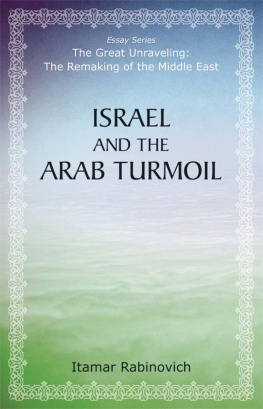
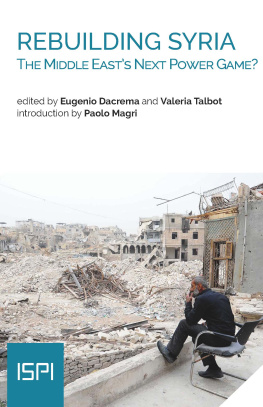
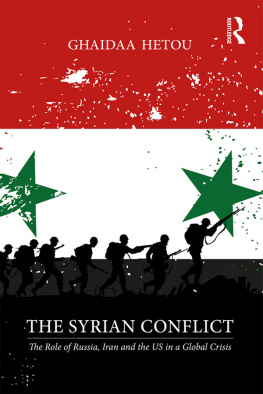


![Cockburn Patrick - Syria Burning: A Short History of a Catastrophe: [VersoUSAed]](/uploads/posts/book/207719/thumbs/cockburn-patrick-syria-burning-a-short-history.jpg)

